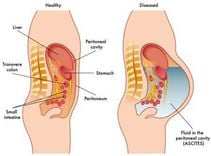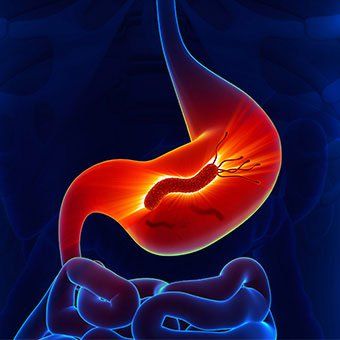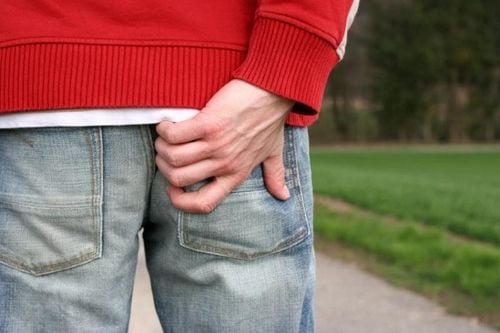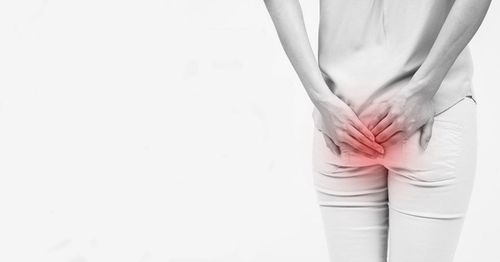The article was professionally consulted by Master, Doctor Nguyen Ngoc Thang, Department of General Surgery - Vinmec Da Nang International General Hospital.
Grade 2 internal hemorrhoids is a condition in which hemorrhoids fall out when going to the toilet but still have the ability to retract on their own. Can grade 2 internal hemorrhoids be cured? If so, how to treat them effectively and prevent recurrence.
1. Grade 2 internal hemorrhoids
Hemorrhoid grading only applies to internal hemorrhoids, not external hemorrhoids. In case the hemorrhoid mass is completely dilated, it is called circular hemorrhoid prolapse.
According to the Ministry of Health's internal hemorrhoid grading, grade 2 internal hemorrhoids are a condition in which the hemorrhoid mass falls out during bowel movements but can still retract on its own.
Similar to other hemorrhoid grades, grade 2 internal hemorrhoids have 2 main clinical symptoms:
- Bleeding: The earliest and most common symptom in hemorrhoid patients. Blood may drip, streak along the stool, or flow in a jet when the patient goes to the toilet, especially when squatting. The bleeding can be fresh blood or blood clots.
- Hemorrhoid prolapse: Usually occurs more slowly, after a period of defecation there is blood. In grade 2 hemorrhoids, when the hemorrhoid mass falls down, it can retract on its own. However, if left untreated, the longer the hemorrhoid mass falls down, the more it will not be able to retract on its own. At this point, hemorrhoids have become grade 4.
- In addition, the patient may also have symptoms of pain when going to the toilet, constipation, itching around the anus...

2. Treatment of grade 2 internal hemorrhoids
There are many questions about whether or not surgery is needed to treat grade 2 internal hemorrhoids. The choice of treatment method depends on the classification of hemorrhoids and each stage as well as the size of the hemorrhoids.
For the treatment of grade 2 internal hemorrhoids, both medical treatment and surgical treatment can be applied.
2.1. Medical treatment
Regularly clean the hemorrhoids by soaking in cold water 2-3 times/day, each time for about 15 minutes.
Using drugs:
- Drugs with venous tonic agents, flavonoid derivatives: increase venous tone, protect microcirculation, reduce edema through anti-inflammatory and anti-infective mechanisms.
- Using topical drugs: Ointments (pommade), suppositories (suppositoire) have anti-inflammatory, local anesthetic effects and increase venous tonic derivatives.
2.2. Treatment with procedures
In cases where medical treatment is ineffective, it is necessary to combine both medical treatment and procedures.
Longo surgery
Longo hemorrhoid surgery is a surgery that uses a circular stapler to cut a ring of mucosa on the dentate line about 3-5cm and sutures the ring with an automatic stapler. The principle of this method is to cut and suture the ring of mucosa in the area with hemorrhoids to reduce blood flow to the hemorrhoidal venous plexus, thereby reducing the volume of hemorrhoids and suspending the anal cushion into the anal canal.
Advantages of this method:
- Does not require much recovery time, short hospital stay.
- This method is well applied in the treatment of rectal prolapse and internal hemorrhoids.
- Longo surgery uses absorbable sutures, so it can ensure aesthetics and limit surgical site infection when the sutures come into contact with the outside environment.
- Patients can return to normal activities and work after a short time.
Disadvantages:
- High cost.
- High recurrence rate, can recur in a short time.
- Some complications may occur during surgery such as secondary bleeding, rectal perforation, secondary rectal stenosis.
A modified method of Longo surgery is the manual hemorrhoid suturing method.
Sclerotherapy

This is a treatment method applied to grade 1 and grade 2 hemorrhoids, using drugs injected directly into the base of the hemorrhoid to reduce blood flow to the hemorrhoid, creating a fibrous scar tissue that adheres to the submucosal muscle layer to help limit bleeding symptoms caused by hemorrhoids.
Advantages:
- Simple technique, easy to perform.
- Short procedure time, quick procedure so it does not put pressure on the performer and the patient.
- It is a safe method.
Disadvantages:
- The technique is simple but requires a highly skilled specialist to achieve good results and avoid complications.
- Complications may occur such as bleeding at the injection site, injection into the prostate causing prostatitis, anal coagulation, vaginal coagulation, etc.
Infrared coagulation
The goal of use is to coagulate the tissue by the impact of heat to create fibrous scars that reduce blood flow to the hemorrhoids and fix the hemorrhoids to the anal canal.
Advantages:
- Does not affect other devices on the patient such as pacemakers or other electronic devices.
- Safe, and has high hemostatic ability.
Disadvantages:
- High cost, often requiring multiple procedures.
Rubber band ligation
The principle of this method is to tie the hemorrhoids together with the skin around the anus to reduce blood flow to the hemorrhoids, creating fibrous scar tissue that adheres to the muscle layer under the mucosa. Therefore, the anal canal will be fixed according to the principle of preserving the anal cushion.
However, due to the technique of performing the hemorrhoid ligation in the anal skin area, this technique often causes a burning, uncomfortable feeling for the patient. Currently, this method is not as widely used as other methods.
In addition to the above methods, there are some other methods that are rarely used today such as:
- Mucosal circular excision surgery: rarely used due to many complications and still has a high risk of recurrence, high cost.
- Hemorrhoidectomy surgery is only applied to grade 2 hemorrhoids when the hemorrhoids are large, multiple hemorrhoids or the patient has heavy and continuous bleeding.
2.3. Care regimen
In the treatment of hemorrhoids, diet and lifestyle play a very important role.
- It is necessary to practice the habit of going to the toilet regularly every day.

- Adjust eating habits to avoid stimulants such as alcohol, coffee, avoid eating spicy foods, eat more fiber.
- Increase physical exercise to improve health.
- Treatment of chronic diseases such as bronchitis, bronchiectasis, gastrointestinal diseases such as constipation.
Internal hemorrhoids grade 2 is not impossible to treat. If the disease is detected early, it can still be completely treated and at the same time minimize the complications that may occur.
Please dial HOTLINE for more information or register for an appointment HERE. Download MyVinmec app to make appointments faster and to manage your bookings easily.













